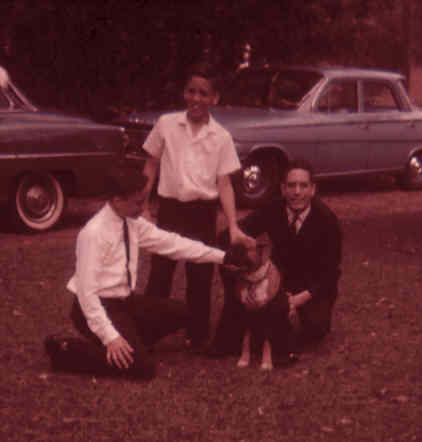Seeing and writing as an act of validation
 The family's house in the 1960s and 1970s.Terri Windling's post Bearing Witness and Patricia Damery's post Goatsong: a Novel served as great catalysts this morning as I continued to wonder what exactly is drawing me back to the Florida Panhandle for a series of short stories.
The family's house in the 1960s and 1970s.Terri Windling's post Bearing Witness and Patricia Damery's post Goatsong: a Novel served as great catalysts this morning as I continued to wonder what exactly is drawing me back to the Florida Panhandle for a series of short stories.I've been working on these stories all year, and at first, they seemed like a simple change of scenery after writing three novels set in Glacier National Park. And then they began to seem, on my 68th birthday, as a mad dash to re-capture the times and places of my childhood.
Both reasons are probably true. Yet, as I read Terri's and Patricia's posts, I thought that as a writer, I needed to see--through my memory and my imagination--a time and a place that fewer and fewer people recall these days and, having witnessed it, write it down in one fictional re-creation after another.
 My brothers and I with Lazy.Terri quotes Terry Tempest Williams as saying, "Bearing witness to both the beauty and pain of our world is a task that I want to be part of. As a writer, this is my work. By bearing witness, the story that is told can provide a healing ground. Through the art of language, the art of story, alchemy can occur. And if we choose to turn our backs, we've walked away from what it means to be human."
My brothers and I with Lazy.Terri quotes Terry Tempest Williams as saying, "Bearing witness to both the beauty and pain of our world is a task that I want to be part of. As a writer, this is my work. By bearing witness, the story that is told can provide a healing ground. Through the art of language, the art of story, alchemy can occur. And if we choose to turn our backs, we've walked away from what it means to be human."Needless to say, I have no ready audience for a personal memoir about my life in Tallahassee, Florida between the first grade and my college graduation. Perhaps, then, I can bear witness to bits and pieces of it through my short stories about Tate's Hell Forest, the Florida Caverns State Park, and the St. Marks River. If I do my work well, readers will catch a glimpse of northern Florida, see it through my eyes, and help validate the fact that it was and, in many ways, still is.
In Patricia Damery's new novel Goatsong, to be released later this fall, Ester keeps a record of the things people throw away at a place near her home where people are dumping trash. Damery herself found trash on her walks years ago and began keeping a record of it, a record that ultimately led her to better understand her neighbors.
 With my brothers Doug and BarryIn her post, she writes: "Two characters were born in that moment of unexpected compassion: Dee, who raged in finding what people dumped, often cleaning the piles up, and Ester, an elderly woman who 'logged' the garbage, holding the non-heroic stance that the importance of her logging was to witness."
With my brothers Doug and BarryIn her post, she writes: "Two characters were born in that moment of unexpected compassion: Dee, who raged in finding what people dumped, often cleaning the piles up, and Ester, an elderly woman who 'logged' the garbage, holding the non-heroic stance that the importance of her logging was to witness."For Damery as well as for her character Ester, to witness what was in that trash pile, became a means of seeing and understanding and validating the people--some of them homeless--who were leaving the trash. Until we bear witness to people and places, we will not fully understand them or our relationships with them.
The world is such a cluttered and noisy place, that much of its magic and beauty go unseen because nobody is there to witness it and write it down and tell people about it years into the future. So it is, that I am better understanding the pine flatwoods, blackwater rivers, and swamps of north Florida along with the people who have lived there by telling you about them in my Florida-short-stories in progress.
--Malcolm
Published on September 06, 2012 12:28
No comments have been added yet.



